The Magnificent Efficiency of Chinese Anesthesia: Observations from Zhejiang’s Second Hospital
May 14, 2023 | Yanting "Sam" Jiang, MD
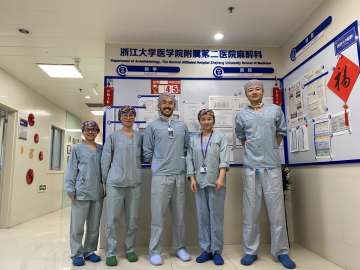
The Second Affiliated Hospital of Zhejiang University (浙江大学医学院附二院 aka SAHZU) is the fourth-ranked best hospital in China. It is located in Zhejiang Province, Hangzhou City—the former capital of the Southern Song Dynasty before that whole “Mongol thing.” It serves an astonishing 8.20 million people annually through its doors and is less than a mile away from The First Affiliated Hospital of Zhejiang University, which ranked third this year.
The Chinese care a lot about rankings, so as you might imagine, there’s a bit of competition. This is why they were absolutely baffled when I told them that last year the US News and World Report (with all its myriad issues) stopped ranking the top 22 hospitals in the US, giving all these hospitals the same "Honor Roll" distinction. They found this humorous.
Zhejiang’s Second (浙二) is fascinating place that combines low-tech and practical solutions with high-tech innovation. They have reusable, sterilized surgical drapes, though I later learned that they’re phasing this out, as a cost-benefit analysis showed that the single-use drapes used in their newer campuses are more cost-effective. They use washable cloth restraints. Their anesthesia machines are old but functional. They don’t have single-use pulse oximeters or BP cuffs. And yet, their facilities are all fairly modern. Even Jiefang Road Hospital, their oldest and largest hospital, has been retrofitted to have motion-activated sliding doors to all the ORs.
Each morning, everyone scans their badge to receive a pair of sanitized hospital Crocs from a machine. They take off their outside shoes before stepping into the OR area, put on the Crocs, then check their shoes into a mechanized shoe cabinet. Then they grab scrubs and head into the locker rooms to change before going to their respective ORs. This entire process takes less than 3 minutes if you’re efficient, which they are.
Their ultrasound situation is better than ours. Availability is much less of a problem, and the only machines I’ve seen are the same Sonosites we use, not ones that require a dial-up modem. They have McGrath-style blades in every room.
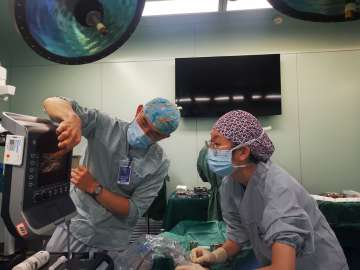
Their newer campuses have been constructed in the past few years, and as a result are quite a bit nicer than most of the hospitals in the US. They are currently building 3 more campuses totaling at least 4000 beds to meet their ever-growing patient needs. They have multiple hybrid ORs. They have surgical supply delivery robots. They need to be efficient to treat 271,000 patients annually in their 144 operating rooms, and with this type of caseload, they get pretty good at procedures.
I used to think I was pretty slick with the ultrasound. I was quickly humbled by a good number of their senior residents. They nicknamed their fastest guy “Lightning” for obvious reasons. It was truly a personal joy to watch his A-line technique—the most fluid, flawless, and elegant arterial line placement I’ve ever seen. It took him less than 90 seconds from the moment his probe touched the skin to when he had secured the line and had an arterial waveform. He did it with a crowd of his peers watching. Not to mention, they don’t use integrated guide-wire catheter kits because they’re too expensive for the anesthesia department (which is compensated on a DRG basis), so they just simply walk a long 20g catheter all the way into the artery.
But I digress. In general, their residents have honed their skills through what I estimate to be at least twice as many reps as we get for most procedures by the time they’re ready to graduate. These things do just kind of happen when standard operating procedure is six to seven thoracic cases by 6pm in a single room.
But ultimately, despite all of this modernization, what China lacks is a history of standardized training. National residency standards for anesthesia (minimum case volumes, procedure numbers, etc.) were only formally established in 2013, though Zhejiang’s Second realized the importance of high-quality training and had internally established such metrics long ago.
Some of their standards are higher than ours. For example, every resident gets a few months of dedicated TEE training, so all their senior residents feel comfortable running through a cardiac exam by the time they’ve graduated. Zhejiang’s Second is the equivalent of a major academic medical center in the US. It graduates some of the best anesthesia trainees in the country, and as a result, their anesthesiologists are well-respected. There is a common cordiality between the nursing, anesthesiology, and surgical departments that is refreshing.
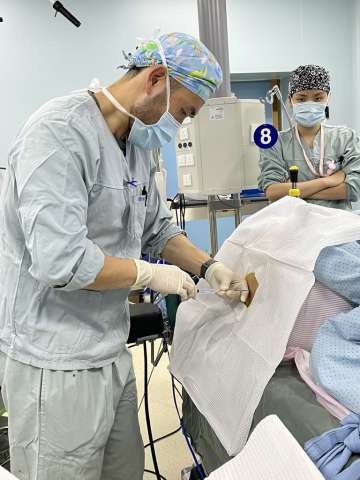
The anesthesiologists at Zhejiang’s Second are a vital part of their educational community, since in addition to their residents, they also accept doctors from other hospitals who come to do continuing medical education by way of a “fellowship” of sorts. Many hospitals do not have the resources that Zhejiang’s Second has, so they send their doctors there to learn skills they can bring back to their home institutions.
For example, I met an attending physician whose hospital only recently acquired ultrasounds, so he was there to learn how to do ultrasound-guided procedures. Many are there to learn how to get better at ultrasound-guided nerve blocks. At the equivalent of their
Santa Monica Hospital, I helped with a few of the 37 blocks they did one day, which even by their account was a busy shift. Some of these visiting doctors have gotten quite good.
I had the opportunity to learn from their department in March 2024. The inaugural UCLA anesthesiology resident physician visited Zhejiang's Second in 2012, and before me the last one went in 2019, since 2020 onwards was complicated. My goals in Hangzhou were to learn new anesthesia techniques, to become more efficient, and to practice my Chinese. Great success on all accounts.
I am fluent in conversational Mandarin to begin with and can read and write at a middle-school level, but “rocuronium” and “myasthenia gravis” don’t tend to come up a lot in conversations with my parents, who before this were responsible for at least 90% of my weekly Chinese. So I made some flashcards for Medical Mandarin and studied from them a few weeks before I left for China. I also made new anesthesia-specific flashcards while I was in Hangzhou and studied from them for an hour or two a day. Sometimes I’d skip a day and it’d take a while longer to get caught up. Anyway, you know how Anki works. This effort proved instrumental because it helped me to communicate with the Chinese doctors on a very detailed level. They told me that I was second most fluent Chinese-speaking resident they've had from UCLA, to which my Chinese mother would probably respond: "Why not number one?"
But ultimately, I felt like language ability was the reason I really got to know how their hospital worked and why things were so efficient. For example, part of why they have such rapid turnover times is because they have fewer human resources available for shift relief, so everyone is incentivized to get the job done so they can all go home. They have an induction room where all patients who need arterial lines and central lines get their procedures done before they go to their ORs. All patients who require intubation are extubated in PACU by nurses so that precious OR time is not utilized for emergence. Things must move fast to accommodate the incredible crush of human mass that gets on and off their operating tables every day, and as a result, all the doctors, nurses, and OR assistants work incredibly hard. It's not all sunshine and roses though—I also met some pretty burned-out doctors, some of whom were quite young.
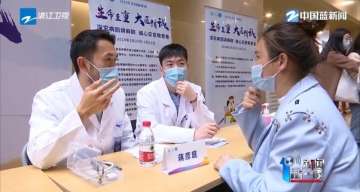
On the first day of the rotation, they handed me a schedule and informed me that I would have to give a presentation to the department during my last week. Any topic. They wanted me to give it in English, since Chinese doctors almost universally want to practice and improve their English. Easy enough, I thought—I would just repurpose one of Dr. Jason Lee’s legendary PowerPoint presentations. They have daily 30-45 minute meetings at 7:30 a.m. before first-case start, so while this would not be quite as intimidating as giving Grand Rounds, I would still be addressing the entire 300+ person department.
Since Chinese culture places great value on public speaking, I took this endeavor quite seriously. But after I got to know their residents and faculty better, I realized that many of them would most likely only comprehend a small fraction of the English needed to describe Pheochromocytoma Anesthesia. So I decided to change the topic and presentation format. Over three weeks, I had had the opportunity to observe and participate in pretty much every anesthesia service line, during which attendings, residents, and I would talk about America, about the way we do things, and about how they could potentially make things better. I decided to give my talk as a collection of these insights, in a mix of both English and Chinese.
For example, during my time on their Acute Pain Service, I discovered that they had very high rates of pericatheter leakage after peripheral nerve blocks. Did you know that there’s an RCT that investigates this exact problem? It’s partly why we all use Dermabond today. Without it, Chalacheewa et al. demonstrated that there is a nearly 100% rate of femoral nerve catheter leakage and migration after 48 hours. Dermabond drops that rate to 0 and 6.7% respectively.1 Neat, huh? Anyway, turns out they make the stuff in China, too, but it’s not commonly used, partly because it’s expensive. But things can change.
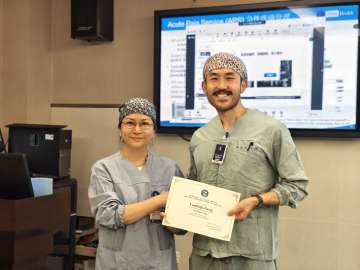
I also tagged along with their Team Captain for a shift, during which we responded to a floor intubation. I noticed that they didn't carry LMAs and bougies in their portable emergency airway box, which I suggested might be useful. I thought they might benefit from having a pharmacist come to their code blues like we do. And that it might be easier to do neuraxial procedures with a clear drape. And pointed them in the direction of some literature that supported prophylactic phenylephrine infusions and crystalloid co-loading for obstetric spinals. And a bunch of other little things. These suggestions weren’t groundbreaking, and they weren’t going to move mountains, but they might just move the needle. And at the end of the day, in medicine, the devil’s in the details.
Ultimately, we do 95% of the same anesthesia. But I think there's plenty of learning to be had from each other in that 5% difference, and it’s why I believe cross-institutional and especially transnational knowledge exchanges are critically important to advancing standards in medicine. Especially in an increasingly interconnected society in which global pandemics can cause even the most advanced healthcare systems in the world to falter in the span of a few short months, maintaining open dialogue among peers of different backgrounds is key.
But hey, what do I know? I’m just a CA-3 about to ride off into the sunset. But the experience I had in Hangzhou has left an indelible impression on me and will influence the way I practice anesthesia for the rest of my life. It has certainly made me more grateful for the residency training that UCLA Anesthesiology has provided, and incredibly thankful for the opportunity that the program gave me to deepen my cultural roots, expand my bag of anesthesia tricks, and continue in my Sisyphean quest for optimal efficiency. Thanks for coming to my TED talk.
1. Chalacheewa et al. Decreasing leakage during continuous femoral nerve catheter fixation using 2-octyl cyanoacrylate glue (Dermabond®): a randomized controlled trial. BMC Anesthesiology. 2021; 21: 169